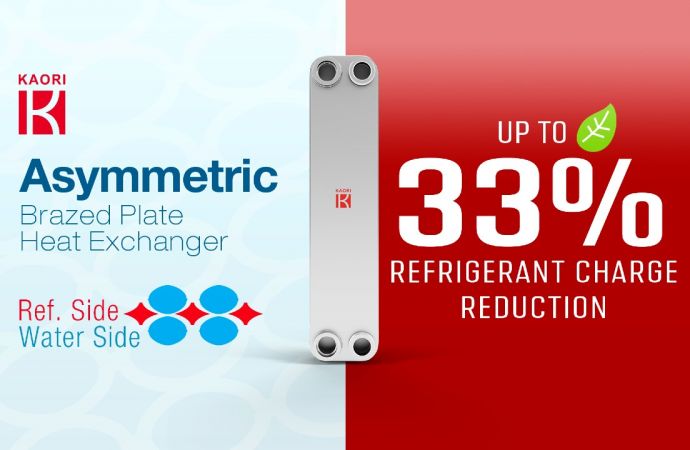Though short of the 220,000-unit pledge made by the industry last year, the number represents progress towards advancing R290 AC adoption in China.

Chinese air conditioner manufacturers join representatives from the Chinese government and UN Agencies in October 2018.
As China continues to work towards phasing out the use of HCFCs in its air conditioning sector, production of propane (R290) room air conditioners (RACs) are beginning to gain momentum according to a recent joint statement from Li Xiaoyan, program officer at China's Ministry of Ecology and Environment/Foreign Economic Cooperation Office (MEE/FECO) and Dou Yanwei, in the department of integrated affairs at the China Household Electrical Appliances Association (CHEAA).
Chinese manufacturers confirmed production of 157,920 R290 split-type RACs, as of August 2019, said Li and Dou. Orders were mostly bulk procurement from organizations such as schools or public buildings. There have been no reports of any private purchases.
The R290 ACs are fixed-frequency, 1.5-HP units with energy- efficiency (EE) grade II. (Haier has produced 50,000 units of grade I EE.) The R290 charge size is around 300 g, following the equirements of China’s national safety standard GB4706.32.
"I congratulate the government of China, the industry association, CHEAA, and in particular the eight Chinese industries for their achievements in terms of deployment of R290 split AC's,” said Ole Nielsen, chief of the Montreal Protocol division for the United Nations Industrial Development Organization (UNIDO).
“I hope the lessons learned can facilitate further uptake of R290 - both in China and internationally. The transition of residential A/C to low-GWP refrigerant combined with high energy efficiency is a key element in order to meet the climate targets of the Kigali Amendment".
The news follows a public pledge made last year during the “International Workshop on Alternative Technologies to HCFC-22 in Room Air-conditioner Sector and Air-conditioner Technology Session,” held in October in Ningbo, Zhejiang Province in China.
At the event, eight companies — Gree, Midea, Haier, Hisense, Changhong, TCL, Aux and Yair — pledged to produce no less than 220,000 split-type R290 RAC units in the domestic Chinese market by the end of the 2019 "cooling year," which ended on July 31.
Though short of the goal, the initial results represent the first step in a concrete effort by the Chinese RAC industry to increase the production of R290 RAC systems in China.
Midea and Haier are the production leaders so far, according to Li and Dou. Official figures will be announced in October.
Remaining barriers
MEE/FECO has stated that, together with CHEAA, it will continue to review progress until the first 220,000 production target is achieved, and then discuss with manufacturers subsequent targets and next steps.
However, a number of key challenges need to be solved before more rapid progress can be made.
Manufacturing costs for room air conditioners using R290 are still higher than units using R22 and R410A, said Li and Dou. This is mainly due to safety requirements and the small scale of production.
However, the Chinese government is helping to offset the additional costs for manufacturing ACs using R290, based on the standard incremental operating cost (IOC) determined and funded by the Multilateral Fund (MLF). The IOC standard will be gradually reduced along with the growth of production. No subsidy is provided from government to end users for purchasing R290 ACs in China.
The government also launched a special program recently to support manufacturers in the training of technicians for installation and servicing of R290 ACs.
Another challenge is that the charge limit for R290 in air conditioning is considered too low, limiting the performance of the units.
More time and resources are needed as well to convert the entire supply chain of the industry from nonflammable to flammable refrigerants. This includes storage, installation, servicing, and more.
Finally, MEE/FECO and CHEAA acknowledge that general awareness of the use of flammable refrigerants within the industry needs to improve.
“Despite the difficulties, the Chinese room air conditioning industry has taken the first step in the marketization of R290 ACs, which will help manufacturers and stakeholders accumulate real-time experience with the production, transportation, installation and servicing of R290 ACs,” said Li and Dou.
Production-line conversions
Moreover, in the past few years, there has been significant progress made in manufacturing R290 RACs in the country.
With the support of international organizations such as UNIDO and with funding provided by the MLF, China converted 18 RAC production lines to R290 with a production capacity of 4,500,000 units per year, as well as three RAC compressor production lines with a production capacity of 5,400,000 units per year.
These conversions were completed during the first stage (2013 to 2015) of China's HCFC Phase-out Management Plan (HPMP).
In 2018, another five air conditioner production lines began conversion from R22 to R290. An additional four R290 RAC compressor production lines are under construction, said Li and Dou.
Despite the difficulties, the Chinese room air conditioning industry has taken the first step in the marketization of R290 ACs."
– Li Xiaoyan, MEE/FECO, and Dou Yanwei, CHEAA
Related stories




